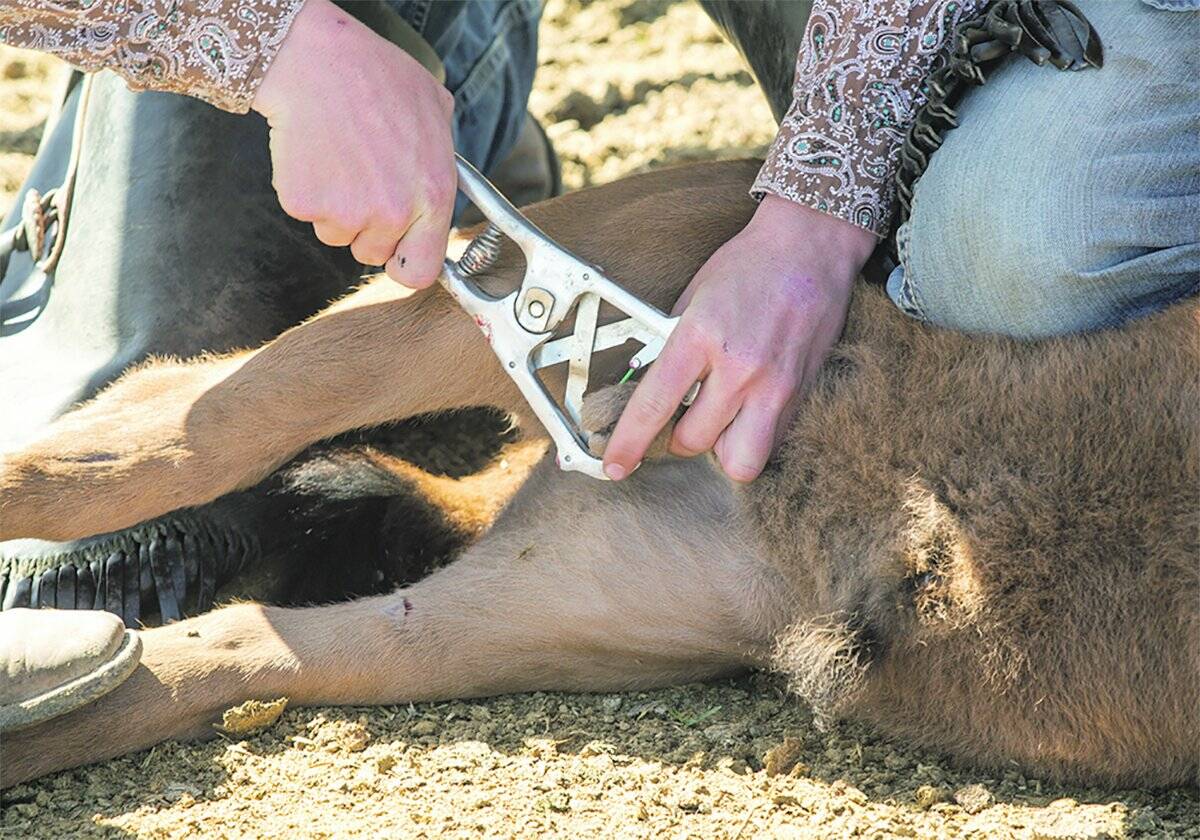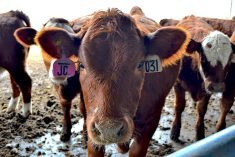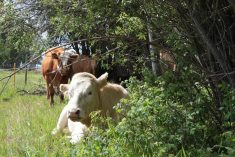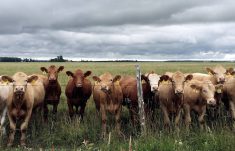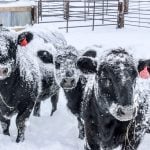When done properly, elastic band castration (banding) is quick, requires minimal restraint, is less invasive than surgical methods, and eliminates the need for stitches. It’s also simply less stressful for both the animal and the handler.
Jodi Suchoplas, a seasoned Manitoba rancher with over 20 years of experience, is something of an expert on the process. In fact, she’s the inventor of a tool called the “TestiGrip,” which turned heads last year at the Manitoba Ag Days farm show in Brandon. She was back at the indoor farm show this year, this time as a presenter.
When it comes to types of banding tools, producers have a number to pick from.
Read Also

Best before doesn’t mean bad after
Best before dates are not expiry dates, and the confusion often leads to plenty of food waste.
The economy bander is probably the most commonly used by producers, Suchoplas noted. It’s easy to operate and can be used with just one hand. Not only is it the least expensive elastrator on the market, but its replacement bands are also the cheapest.
“But I recommend that you get new bands every year, because if they dry out and crack, they’re going to break off,” she said.
They are good for younger calves and can also be used on sheep and goats.
The premium bander is similar to the economy bander, but slightly better quality. The opening is also a little bigger, making it more efficient for calves that need a little bit more spacing.
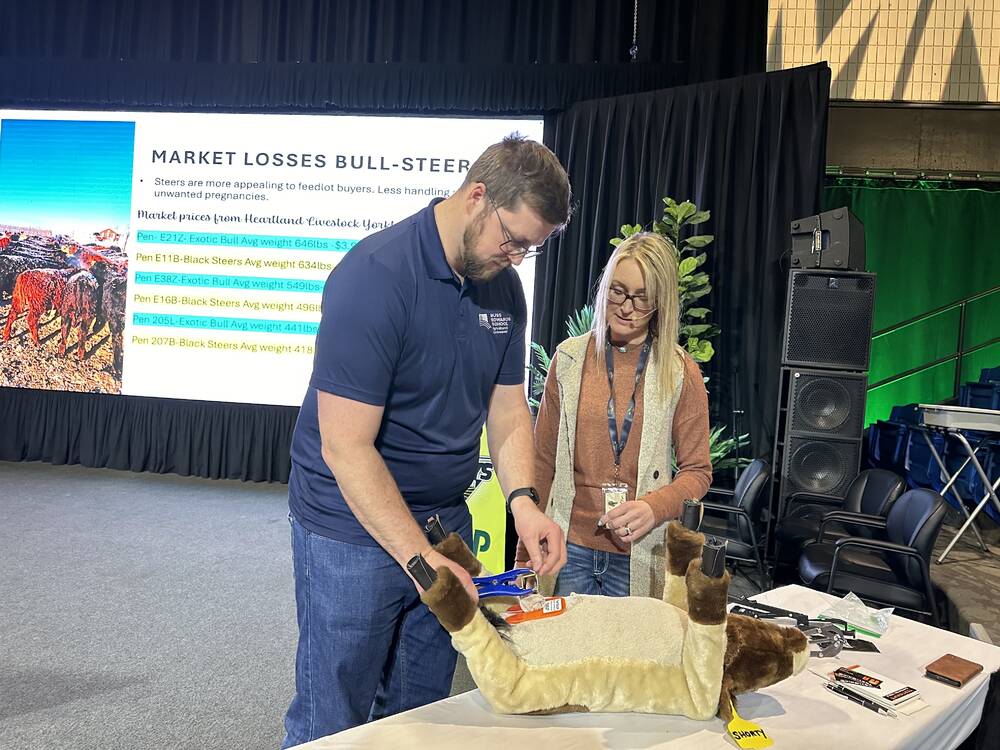
Suchoplas also pointed to the Tri-Bander option, which is a little bit bigger and, as such, works well for slightly larger calves.
Finally, the XL Bander, as the name implies, is ideal for larger calves. It is all metal and very durable. It’s the largest bander Suchoplas uses on her operation.
Getting down to business
Suchoplas emphasizes the importance of correct band placement and advises only banding if both testes are fully descended in the scrotum. The band should be released around the scrotal neck — the narrow area where the scrotum meets the body, just above the testes. And she also stresses the importance of being careful not to catch the testes in the band.
“This is very important, especially if you’re banding a calf that’s standing,” she says. “You might not be able to see correctly, and when you release, it could catch one, which then becomes an open wound that could become infected.”
Banding a calf lying down
Suchoplas says banding the calves while they’re lying down is the preferred style on her farm. It’s a one-person job, so in order to hold the calf in place and stop it from thrashing around and kicking, she tucks the calf’s top leg under her own leg to help restrain the calf.
“Then once you’ve gathered both testicles, open the bander and slip the band over them,” she said. “If you pinch in between the testicles, it helps push them down lower so that they stay in place.”
Sometimes a producer will encounter a calf where one testicle may be retained due to tightness in the muscle. In these cases, massaging the muscle gently can help encourage the testicle to descend, while holding tension behind it to guide it into place.
Suchoplas stresses the importance of making sure a band is properly placed.
“It just takes seconds, but it saves us so much hassle. If we catch it, we can cut the band off and start over,” she says, but adds that if the band is not placed correctly, it can result in a retained testicle — often referred to as a ‘belly nut’ — which would require surgical removal.
Banding a calf standing
The only calves that get banded standing on her operation are older calves that, for various reasons, weren’t able to be banded earlier.
“We like to use a chute system and always make sure when they’re in the chute to restrain the calf correctly,” she said, adding that to prevent kicking, the farmer should bend the calf’s tail over its back in a firm but controlled manner.
Ranchers may run into situations where one or both testicles remain retained in the animal’s body.
“If you’re having trouble getting both testicles into position, you can bring one down, close the bander, and then apply gentle pressure on the other testicle to help it descend,” she said.

